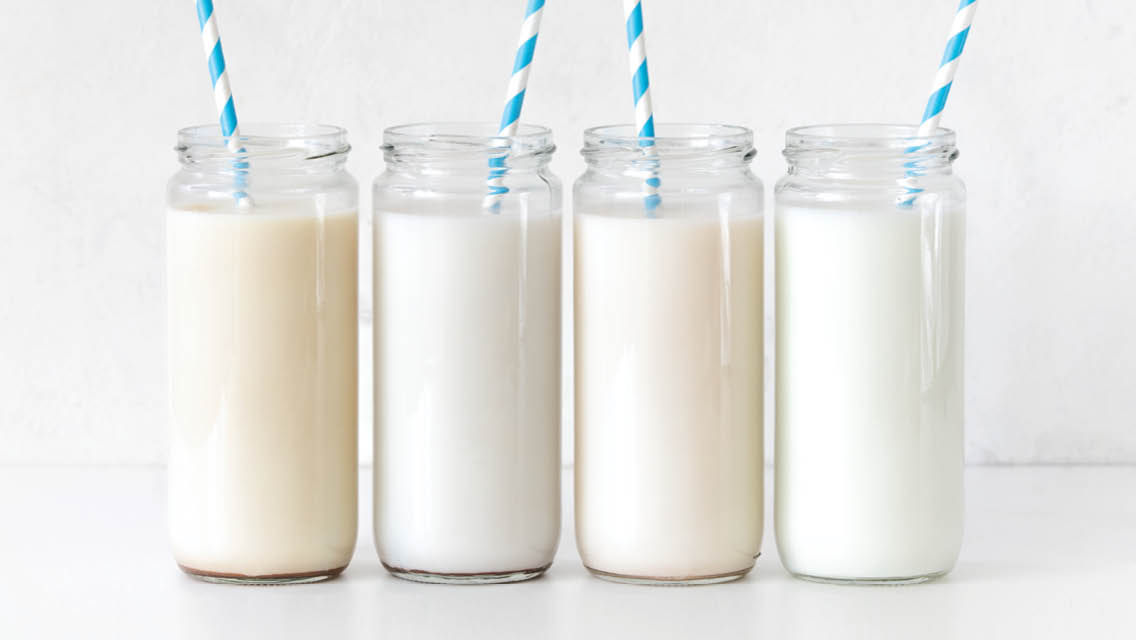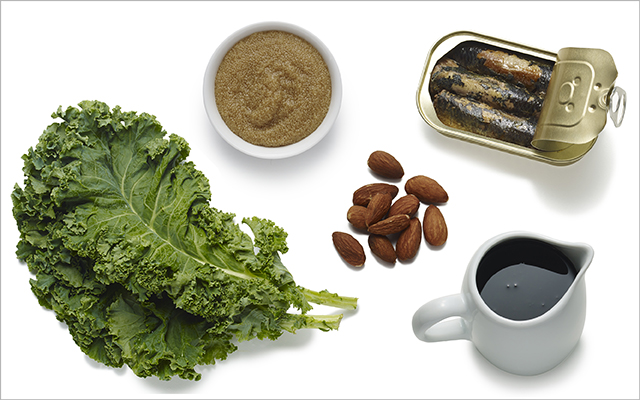Got alt-milk? Milk consumption in the United States has declined for decades, while nondairy milk has become a cash cow: Alt-milk sales have risen 23 percent in the past four years alone.
Health concerns, such as lactose intolerance and sensitivities, along with controversies about the ethical treatment of animals, have spurred sales.
The carbon footprint of the dairy industry is another driver. Many studies have indicated that feed- and livestock-production practices contribute significantly to greenhouse gas (GHG) emissions. According to 2018 research from the University of Oxford, producing a glass of dairy milk generates about three times more GHG emissions than producing a glass of plant-based milk.
But just how climate-friendly are the top-selling nonmilk options? A glass-by-glass comparison is difficult. Setting aside the potential carbon impacts of transportation and processing, consider these factors.
Almond Milk
The eco-footprint of the most popular nut milk is fairly high. Like most nut varieties, almond trees are thirsty: It takes about 16 gallons of water to produce one glass of almond milk. Yet about 80 percent of the world’s almonds are grown in California’s arid Central Valley region.
Almonds are also doused with pesticides, such as Monsanto’s Roundup, which contains glyphosate — a “probable human carcinogen,” according to the World Health Organization.
Make it more climate-friendly by choosing organic or by making your own almond milk. (To learn how, visit “Almond Milk“.)
Soymilk
Growing soy requires massive expanses of land, which has contributed to deforestation — particularly in the Amazon Basin — and the displacement of smaller farms and Indigenous communities. Deforestation destroys habitat, as well, dealing a blow to biodiversity. And it raises GHG emissions, too.
Soy farming also tends to be pesticide intensive. More than 90 percent of the United States soy crop is genetically modified to tolerate Roundup.
Make it more climate-friendly by choosing organic soymilk produced with soybeans from U.S. farms. Also, look for Fair Trade labeling.
Rice Milk
It takes about 400 to 650 gallons of water to produce 1 pound of rice. Some estimates suggest one glass of rice milk requires almost 4 gallons of water.
Rice farming generates GHG, including methane and nitrous oxide. Research by the Environmental Defense Fund shows that combined emissions from rice farms worldwide could have the same long-term warming impact as about 600 coal plants because nitrous oxide lasts much longer in the atmosphere than methane.
Make it more climate-friendly by looking at the brand’s website for a sustainability impact statement describing its GHG-mitigation strategies.
Oat Milk
Sowing oats emits around 240 grams of carbon dioxide per pound of food. Oats replenish soil and suppress weeds, repelling pests and reducing the need for pesticides. That’s why farmers and home gardeners often plant oats in crop rotation or for winter cover, as a weed suppressant, and as “green manure” that’s plowed back into the soil.
Oats can flourish in drier landscapes as well. It takes about 300 gallons of water to produce 1 pound of rolled or flaked oats — about one-seventh the amount required for a pound of almonds.
Make it more climate-friendly by choosing oat milk over other alt-milks.





This Post Has One Comment
Very enlightening article thank you! Can you tell me how the plant-milks compare to the environmental impact of dairy milk?
What about the comparisons of the nutrition in the plant milks to dairy? I know dairy is higher in sugar than the plant-milks, but also higher in protein.
I started buying Silk’s Ultra, unsweet, because it has an overall higher nutritional profile, i.e. 20g protein, no sugar, and 480mg calcium than dairy, but now I’m concerned about the environmental impact of growing and the use of pesticides.